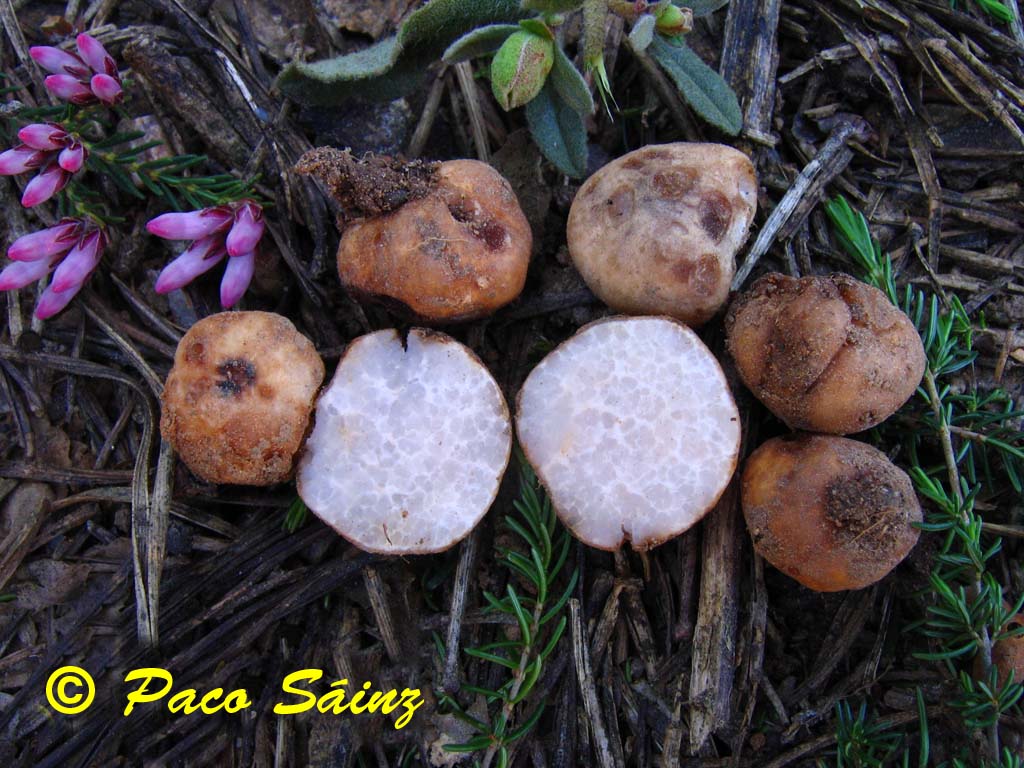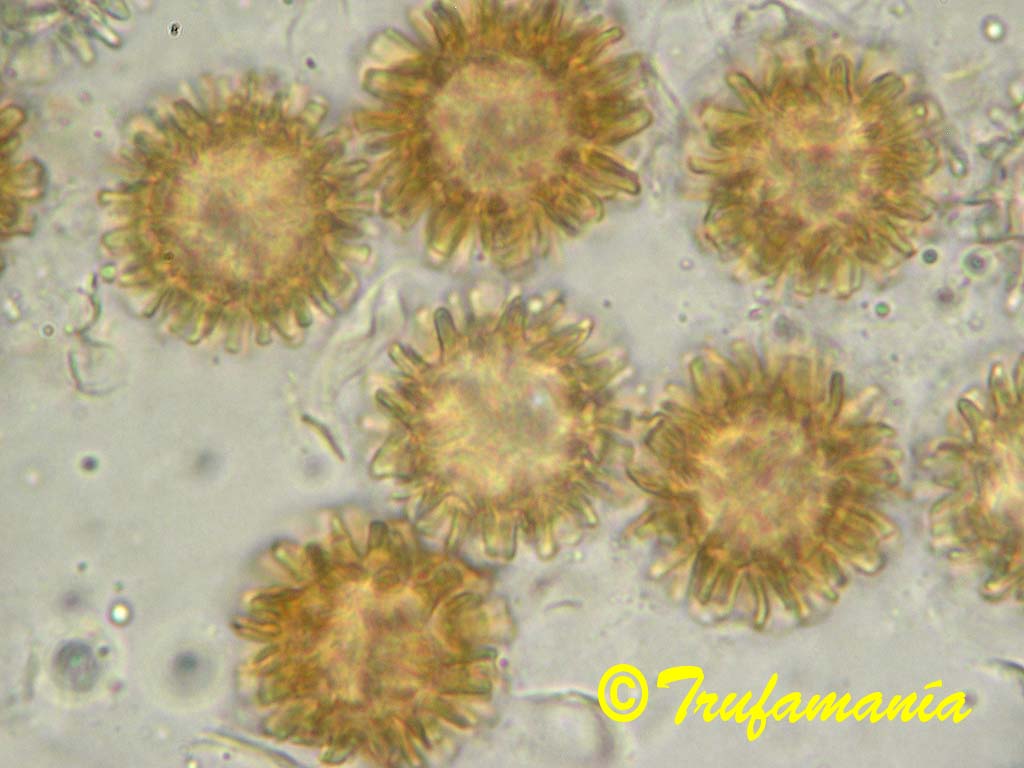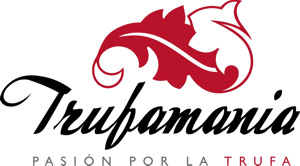TERFEZIA PSEUDOLEPTODERMA Bordallo, Ant. Rodr. & Muñoz-Mohedano
Mycotaxon 124: 200 (2013)

(Click on the picture to see more images)
Macroscopic characters:
Ascomata: hypogeous, 1–2 cm in size, subglobose, rounded sterile base with a mycelial tuft, ochre at first, becoming brown with black spots, smooth.
Peridium: 250–400 µm thick, poorly delimited, pseudoparenchymatous, composed of subglobose cells, hyalines and thin-walled in the innermost layers, yellowish and with thicker walls in the outermost layers.
Gleba: solid, fleshy, succulent, whitish with greyish pockets at first, maturing to brown yellowish pockets of fertile tissue separated by whitish, sometimes with pink spots, sterile veins.
Odour: faint, no distinctive
Taste: mild.
Distibution, Habitat and Season:
Widely distributed in the western half of the Iberian Peninsula, in sandy, acid soils, associated with Cistaceae, from February to May.
Comments:
Molecular analysis have shown several distinct clades within spiny spored Terfezia species with pseudoparenchymatous peridium. Terfezia pseudoleptoderma differs from other spiny spored Terfezia species in the small size of ascomata, <2 cm diam, spore size 19–22 µm including ornament, with spines 2–3 µm long, sometimes connected to form a pseudo-reticulum, in growing in acid soils associated with Cistaceae.
Acknowledgments:
To Paco Sáinz, author of the macroscopic pictures.

(Click on the picture to see more images)
Microscopic characters:
Asci: nonamyloid, subglobose, ellipsoid to ovate, sessile or short-stipitate, 60–85 x 45–65 µm, walls 1 µm thick, with 6–8 irregularly disposed spores, randomly arranged in the gleba.
Ascospores: globose, (18–)19–22(–23) µm diam (median = 21 µm) including ornament, 15–18(–19) µm (median = 17 µm) without ornament, hyaline, smooth and uniguttulate at first, by maturity yellow ochre and ornamented with cylindrical, conical, sometimes finger-like and flexuous, blunt spines, 2 –3(–4) µm long, 1 µm wide at the base, sometimes connected to form a pseudo-reticulum.
| Antonio Rodríguez trufamania@gmail.com antonio@trufamania.com |



